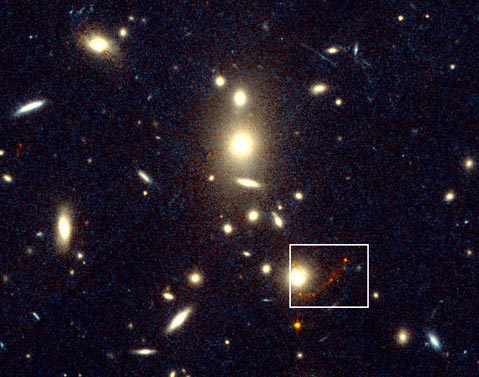Explanation: What if we could see back to the beginning of the universe? At one tenth the universe's present age, we might see galaxies forming. But what did galaxies look like when they were forming? These questions took a step toward being answered yesterday with the release of analysis of a Hubble Space Telescope (HST) photograph of the most distant object yet discovered. Pictured in the box above, this galaxy appears to us - billions of years later and across the universe - as a faint red smudge. In technical terms, this galaxy lies at the record redshift of z=4.92. Practically all of the yellow-white objects in the photograph are galaxies in a nearby cluster which together act as a lens in amplifying the light from the ancient galaxy. A follow-up picture by the ground-based Keck Telescope actually measured the distant redshift.
1999 2000 2001 2002 2003 2004 2005 2006 2007 2008 2009 2010 2011 2012 2013 2014 2015 2016 2017 2018 2019 2020 2021 2022 2023 2024 2025 |
Yanvar' Fevral' Mart Aprel' Mai Iyun' Iyul' Avgust Sentyabr' Oktyabr' Noyabr' Dekabr' |
NASA Web Site Statements, Warnings, and Disclaimers
NASA Official: Jay Norris. Specific rights apply.
A service of: LHEA at NASA / GSFC
& Michigan Tech. U.
|
Publikacii s klyuchevymi slovami:
dalekie galaktiki - gravitacionnaya linza - Skoplenie galaktik
Publikacii so slovami: dalekie galaktiki - gravitacionnaya linza - Skoplenie galaktik | |
Sm. takzhe:
Vse publikacii na tu zhe temu >> | |
